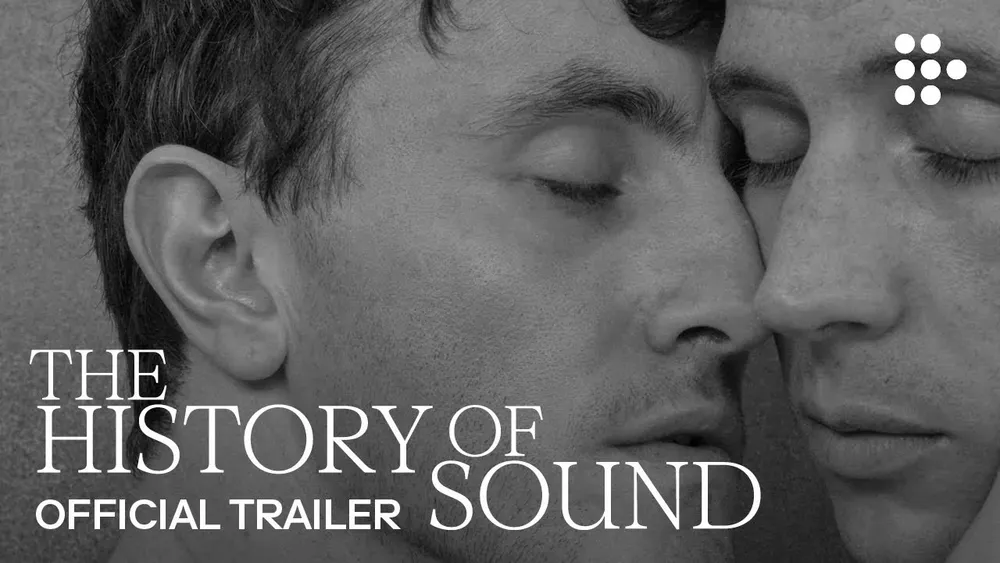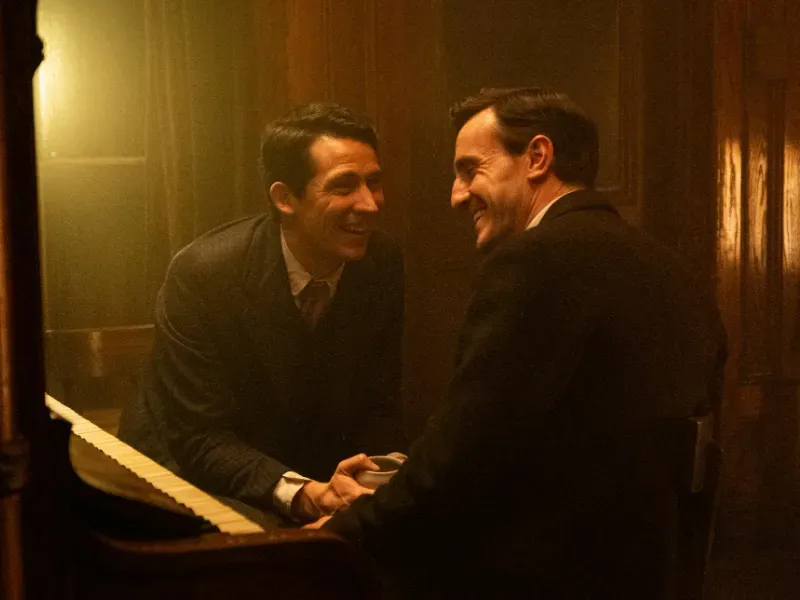Director Oliver Hermanus makes a bold statement from the very first frame of The History of Sound. The opening credits unfold in complete silence — a striking choice that immediately draws the viewer in. This moment sets the tone for a film in which sound — or the absence of it — holds as much meaning as the visuals. It’s a deliberate and decisive decision, inviting the audience to feel the weight and significance of sound from the very start.
Adapted from Ben Shattuck’s acclaimed short story, the film seamlessly expands on its literary roots. Hermanus enriches the narrative with cinematic depth, capturing the core themes of love, memory, and the transformative power of sound in a way that feels faithful and profoundly moving.
The narrative unfolds in 1917, when Lionel (Paul Mescal) and David (Josh O’Connor) meet as music students at the New England Conservatory. From the start, there’s an undeniable pull between them. Lionel, a farm boy from Kentucky with the rare ability to “see” music through his synesthesia, is captivated by David’s confidence and worldly charm. David, in turn, is drawn to Lionel’s quiet brilliance. When David proposes a journey through rural Maine to record folk songs, Lionel doesn’t think twice — he’s ready to follow.
What unfolds is a quiet, deeply moving journey through snow-covered towns and the lives of everyday people. As they record the voices and songs of strangers, something even more profound begins to take shape between them. Their relationship grows in the spaces between words, in the shared glances and unspoken moments.

Mescal delivers a remarkable performance as Lionel, effortlessly capturing the essence of the era through Lionel’s looks, wardrobe, and mannerisms. His rendition of “Silver Dagger” is especially mesmerizing, showcasing his depth as an actor. This portrayal firmly cements Mescal’s place among the greatest talents of our time. Mark my words: an Oscar nomination for this role is inevitable.
O’Connor, meanwhile, brings a quiet depth to David, playing him as someone who seems self- assured on the surface but whose inner struggles simmer just beneath. O’Connor’s ability to convey so much with the smallest gestures — a pause, a glance, a slight shift in tone — is nothing short of masterful. His performance is award-winning, too.
The film’s narrative unfolds with a deliberate, artful obscurity, gradually revealing its intricacies. It demands active engagement from the viewer, rewarding close attention as the pieces of the puzzle slowly fall into place. The eventual revelation of the complete picture is both breathtaking and profoundly unsettling.
Visually, the film is a feast for the senses. The cinematography captures the smallest details with a quiet beauty. And the folk songs they record are woven into the fabric of the story, becoming as essential as the characters themselves.
The History of Sound isn’t just a film — it’s a meditation on love, memory, and the way music can preserve the essence of a moment. Mescal and O’Connor deliver performances that feel like lightning in a bottle, and their connection is the soul of this story. This film will win many awards. Treat yourself and watch it on the big screen!
Frank Gaimari is an author and film reviewer in Seattle. He lives with his husband and their two golden retrievers. Learn more about his work at www.FranksFilmReview.com
Support the Seattle Gay News: Celebrate 51 Years with Us!
As the third-oldest LGBTQIA+ newspaper in the United States, the Seattle Gay News (SGN) has been a vital independent source of news and entertainment for Seattle and the Pacific Northwest since 1974.
As we celebrate our 51st year, we need your support to continue our mission.
A monthly contribution will ensure that SGN remains a beacon of truth and a virtual gathering place for community dialogue.
Help us keep printing and providing a platform for LGBTQIA+ voices.
How you can donate!
Using this link: givebutter.com/6lZnDB
Text “SGN” to 53-555
Or Scan the QR code below!



